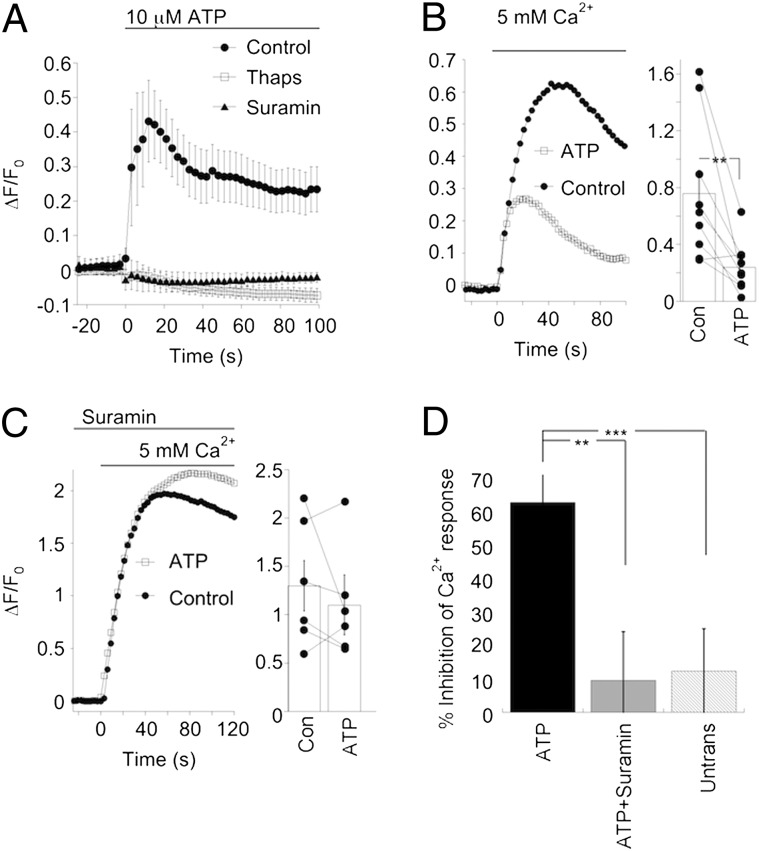Fig. 4.
Stimulation of receptors that do not signal via Gαo can modulate TRPM1 function. (A) Time course of the change in intracellular Ca2+ concentration following bath application of the P2Y receptor agonist ATP alone (10 μM, filled circles) or in the presence of the broad-spectrum P2 receptor antagonist suramin (open circles), or 5 μM thapsigargin (filled triangles). The same cells were imaged in the absence and presence of 100 μM suramin (n = 6 coverslips). Responses to ATP after treatment with thapsigargin were measured in cells from separate coverslips (n = 9). (B, Left) Example of an experiment comparing Ca2+ transients evoked by increasing extracellular Ca2+ in the absence and presence of ATP. (Right) Summary of individual paired experiments as well as the mean ± SEM (P = 0.005, n = 9 coverslips). (C) Same experiment as in B except that suramin was added to the bath 2 min before the start of the experiment. In the presence of suramin, ATP did not significantly change the amplitude of the Ca2+ transient (P = 0.35, n = 6 coverslips). Thapsigargin was added to the bath to block release from Ca2+ stores in both B and C. (D) Summary of the effect of ATP on Ca2+ influx through TRPM1 channels, expressed as percent inhibition. Ca2+ influx was strongly reduced by ATP, but not in the presence of suramin (control; n = 9 coverslips, suramin; n = 6 coverslips, **P = 0.01) or in untransfected HEK293 cells (n = 12 coverslips, ***P = 0.006).

